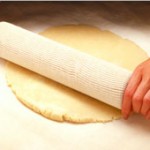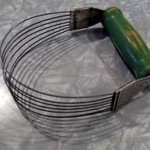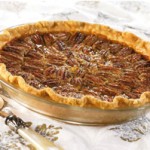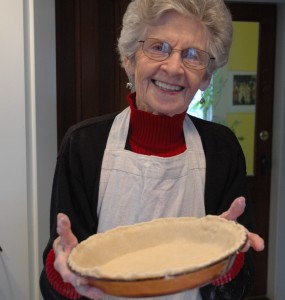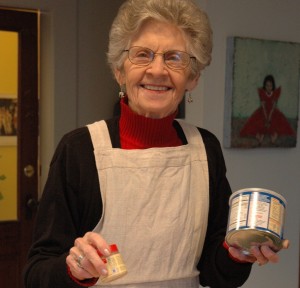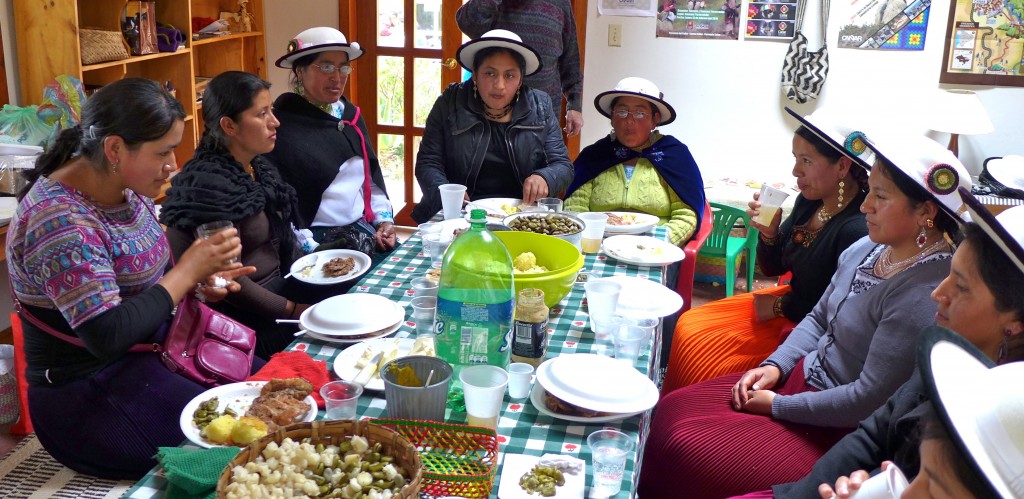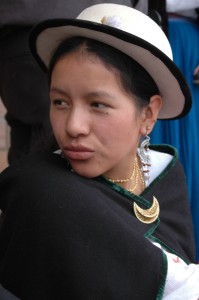Dear Friends: Thank you for all the nice comments on my previous post about my mother’s pecan pies. I feel compelled to follow up today, as there is so much interesting pecan-pie-related news, some of it on the front page of the New York Times (“No Holiday Pecan Pie? Thank China, Feral Pigs and Ill-Timed Rain”). But to go back, I need to clarify that the hammer in Mom’s hand was for cracking pecans, an obvious oversight by clueless me, but recognized immediately by cook Michael. Mom probably brought the nuts with her from New Mexico, a state that produces pecans, but I think she learned to make pecan pies in Texas, my father’s home territory, and where we briefly lived when I was a child.
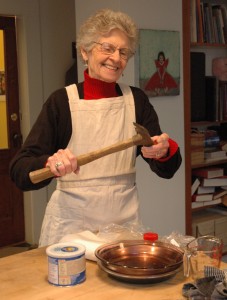 And this brings me to that moment of regret we all feel with the loss of loved ones: If only I could ask Mom to tell me the story of how she learned to make pecan pies! Was it from our southern grandmother, Jessie, whom she never much liked for her stern character and chewing tobacco habit, with spittoon close by? (This was Texas, remember). I will never know, but this reminds me why I love StoryCorps and their tag: “100 years from now, what will it mean to have recorded and preserved the voices and experiences of everyday people?” This year StoryCorps celebrated ten years of traveling the country in an Airstream trailer, “listening to America,” recording stories in their mobile sound studio and teaching how to do oral histories. On their website, you can invite them to come to your community. (http://storycorps.org/)
And this brings me to that moment of regret we all feel with the loss of loved ones: If only I could ask Mom to tell me the story of how she learned to make pecan pies! Was it from our southern grandmother, Jessie, whom she never much liked for her stern character and chewing tobacco habit, with spittoon close by? (This was Texas, remember). I will never know, but this reminds me why I love StoryCorps and their tag: “100 years from now, what will it mean to have recorded and preserved the voices and experiences of everyday people?” This year StoryCorps celebrated ten years of traveling the country in an Airstream trailer, “listening to America,” recording stories in their mobile sound studio and teaching how to do oral histories. On their website, you can invite them to come to your community. (http://storycorps.org/) 
Related to that, I heard on NPR that today, November 29, is the National Day of Listening, a day to honor a loved one through listening. I liked that idea, so I asked Michael if I could interview him. He’s always harkening back to the good old days as we walk around Portland, pointing out sights and places, saying how wonderful everything used to be, and how it’s all gone to hell now. “No way am I going to be remembering on demand,” he grumbled as he worked on making gnocchi with a new recipe (bake the potatoes first). Oh well, so much for that idea. (http://nationaldayoflistening.org/)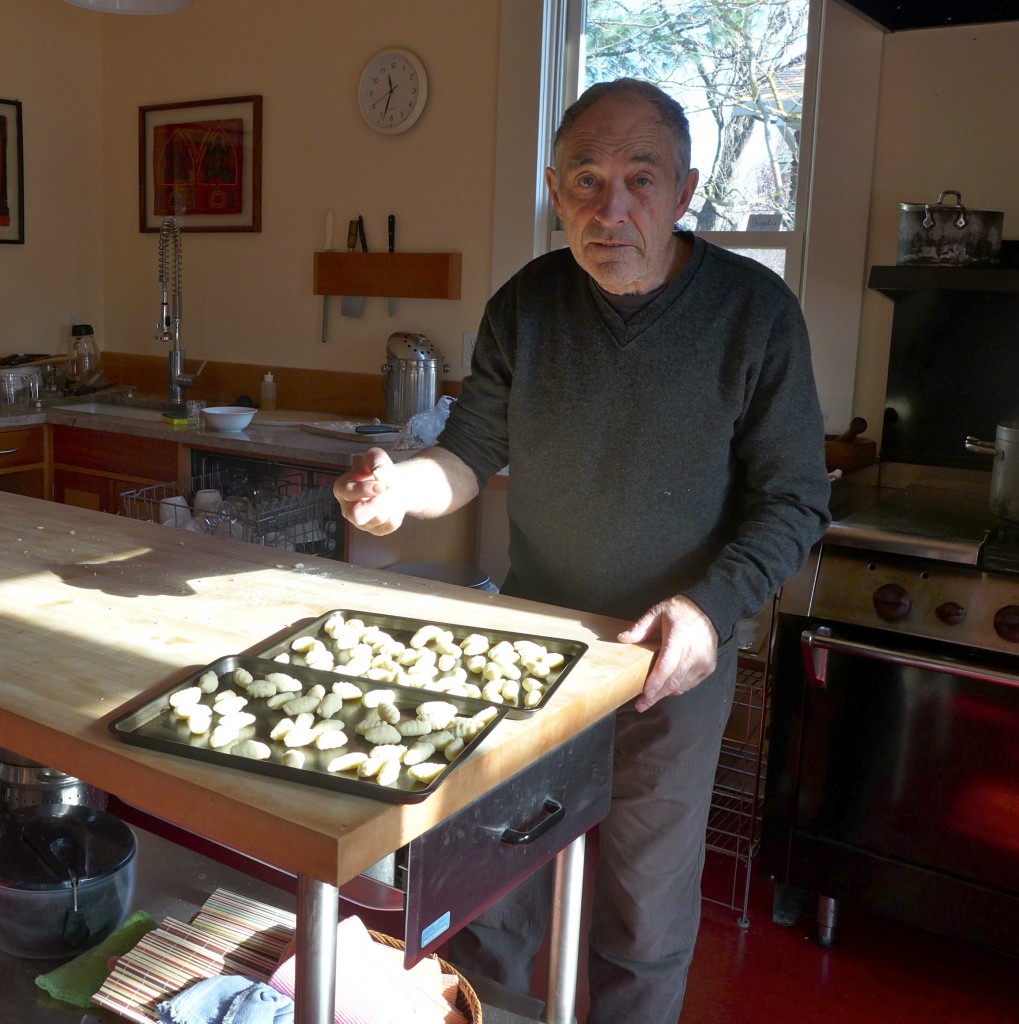
OK, so what’s the connection with pecans and feral pigs and China that has driven pecan prices up over 30% this year? Record rainfall last spring and summer in Georgia and South Carolina, summer drought in Texas and Oklahoma, a disease called scab, heavy fall rains in Texas and a sporadic harvest. And then those darn Texas feral pigs moved in to take advantage of the situation, along with freeloading squirrels. “Wildlife pressure,” was how a spokesperson for the Texas Pecan Growers Association delicately put it.
And now China: most of the high quality pecans go for export, and China is the biggest customer. Called “bi gen,” which sounds similar to “pecan,” they are sold in bagfuls in street stalls and grocery stores, and are especially popular around Chinese New Year, which falls in January this year.
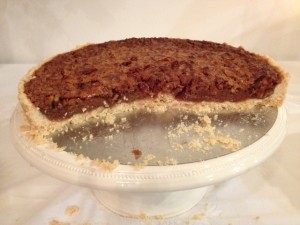 Bottom line: Pecan prices are way up, and pecan pie popularity is seriously down. Google reports twice as many searches for pumpkin pie as for pecan pie this year. But in the south, home of my father’s kinfolk, pecan pie is still king. My sister Sher, visiting in Florida, felt the pull and sent this photo of her pie, with the message “Mom would have been proud.”
Bottom line: Pecan prices are way up, and pecan pie popularity is seriously down. Google reports twice as many searches for pumpkin pie as for pecan pie this year. But in the south, home of my father’s kinfolk, pecan pie is still king. My sister Sher, visiting in Florida, felt the pull and sent this photo of her pie, with the message “Mom would have been proud.”
Enough about pies! If you are wondering about my holiday effort to produce a pumpkin-ginger cheesecake for Thanksgiving, I can tell you it was a mixed success, from a social/marital point of view. Michael does easily share his kitchen, at least with me, and he was busy preparing his own contribution to Thanksgiving, an appetizer he called “French tacos.” I just wanted to be left alone, in quiet, with my recipe (which I completely misplaced and had to print out again from Glutonforlife website). Yet I needed to ask him if we had a hand mixer (no), small measuring cups (no), a can opener (yes), and if the oven temp was accurate after my cheesecake was far from done after the prescribed hour (yes, but it still went 1.5 hours, caramelizing the crust). I forgot to read the instructions about how to mix the ingredients, and ended up with everything in the blender, in stages. A big mess. I was surly, Michael was annoyed, but by the time we left for our friends’ house, a truce was declared. Thanksgiving dinner with Bruce and Nancy and their family was a big success. Oh, and the cheesecake was delicious, (but so rich we had to take a long walk today to burn off some calories).
.



